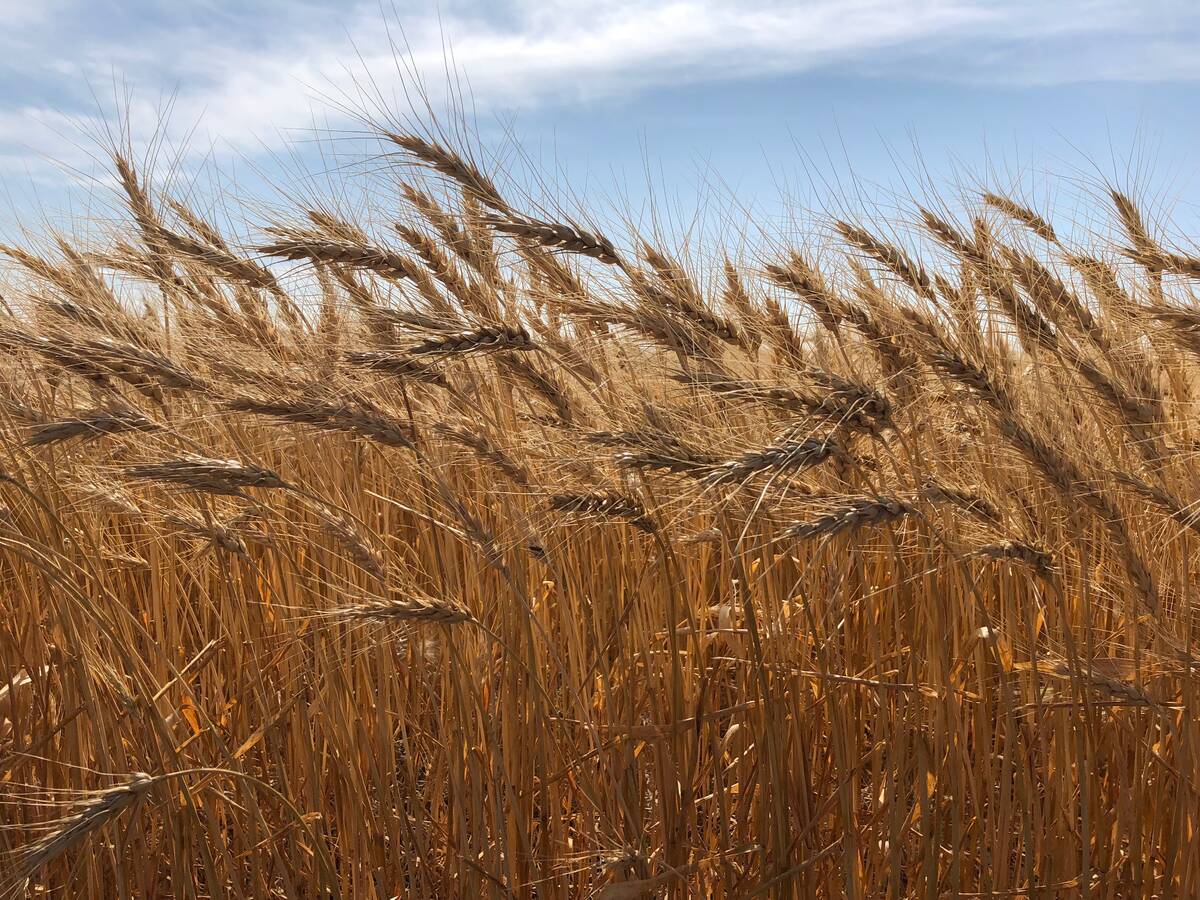CNS Canada — Canadian farmers are sitting on a very large wheat crop this year, but the moisture that helped boost yields also caused disease issues and supplies of higher-quality wheat may still be in short supply.
While the spring wheat harvest is just getting started and it’s hard to get a firm handle on quality at this time, “it’s fair to say that it won’t all be premium,” said Brent VanKoughnet, executive director of the Manitoba Wheat and Barley Growers Association and a farmer at Carman, Man.
Read Also

Prairie Wheat Weekly: Spring prices vary as durum nudges up
Spring wheat cash prices varied across the Prairies for the week ended Nov. 25, while those for durum were slightly higher. Losses in the United States wheat complex weighed on prices north of the border, while support came from a weaker Canadian dollar.
“There are years when nothing can go wrong; this isn’t one of them,” he added.
As far as the wheat quality goes, “it’s really variable,” he said, noting his own farm had received two inches of rain over the past three days, while “two miles from here, they’ve only had half an inch.”
Excess moisture also caused problems in other parts of Western Canada during the growing season, with major wheat grower Saskatchewan dealing with fusarium issues as well, according to the latest provincial crop report.
On top of increased disease pressure, more recent rains are causing harvest delays, which can lead to quality downgrades as well.
Pam de Rocquigny, a crops specialist with Manitoba Agriculture, said winter wheat quality was generally good, but early reports on spring wheat were highly variable.
“There is some variability out there, but what that variability is in terms of numbers, we don’t have yet,” and determining yields is much quicker than grading the crop, she said.
“Anytime there is wet weather during the harvest, it can obviously cause concern in terms of downgrading,” she said.
“Yield is one component of how (farmers) get paid, but quality is important as well. So they are doing everything they can, given the challenging conditions, to make sure they are maximizing the quality of the crop they are taking off.”
In a report Tuesday, Statistics Canada pegged Canada’s 2016-17 wheat crop at 30.5 million tonnes, compared to 27.6 million the previous year.
Of the wheat total, spring wheat was pegged at 20.2 million tonnes, up by only 300,000 tonnes from 2015-16. Durum and winter wheat had more sizeable increases, accounting for most of the yearly change.
— Phil Franz-Warkentin writes for Commodity News Service Canada, a Winnipeg company specializing in grain and commodity market reporting. Follow him at @PhilFW on Twitter.









![“There’s even a question of would harvest equipment be available for 2023. There will be some equipment available, but will it be what you want and [what] fits your needs?” – Bill Campbell, Keystone Agricultural Producers. Photo: iStock/Getty Images](https://static.manitobacooperator.ca/wp-content/uploads/2023/08/23104315/combines-3-silhouette-iStock-235x157.jpg)






